MENÚ
AR | ARS
AR | ARS
-
-
- Todas las pipetas, dispensadores y manipuladores automatizados de líquidos
- Pipetas mecánicas
- Pipetas electrónicas
- Pipetas multicanal
- Pipetas de desplazamiento positivo y dispensadores
- Puntas de pipeta
- Dispensadores de botella
- Controladores de pipeta
- Accesorios para dispensadores y pipetas
- Pipeteo automatizado
- Consumibles de automatización
- Accesorios de automatización
- Servicios para dispensadores y pipetas
Sorry, we couldn't find anything on our website containing your search term.
Está a punto de abandonar este sitio.
Por favor, tenga en cuenta que su carro de la compra actual no ha sido guardado todavía y no podrá ser restablecido en el nuevo sitio ni cuando regrese. Si desea guardar su carro de la compra, inicie sesión en su cuenta.
Sorry, we couldn't find anything on our website containing your search term.
Placas
Categorías
Filtros
Restablecer todo
Preparación de ácidos nucleicos
Proteómica
Cultivo de microorganismos
PCR
Grado de pureza
Detección por fluorescencia/luminiscencia
Esterilizable en autoclave
ACT label
En el laboratorio, las placas –también conocidas como placas multipocillo, placas de microtitulación o microplacas– son consumibles esenciales que se utilizan para toda una serie de aplicaciones diferentes, como ensayos de cuantificación de ácidos nucleicos y proteínas, y ensayos de viabilidad y proliferación celular. A la hora de buscar una placa, la calidad, la durabilidad y la idoneidad para sus aplicaciones son consideraciones clave.
Explore las placas Eppendorf que le presentamos a continuación, incluyendo microplacas, placas de 96 pocillos, placas de 384 pocillos, placas PCR y placas deepwell. Descubra las razones por las que debería elegir nuestras placas y encuentre información que le ayudará a seleccionar el tipo de placa adecuado para su laboratorio.
Explore las placas Eppendorf que le presentamos a continuación, incluyendo microplacas, placas de 96 pocillos, placas de 384 pocillos, placas PCR y placas deepwell. Descubra las razones por las que debería elegir nuestras placas y encuentre información que le ayudará a seleccionar el tipo de placa adecuado para su laboratorio.
Leer más
¿Por qué elegir las placas de laboratorio de Eppendorf?
¿Qué placas Eppendorf debe utilizar?
¿Cuánto cuestan las placas Eppendorf?
¿Por qué elegir las placas de laboratorio de Eppendorf?
Calidad y estabilidad de centrifugación
La calidad es una característica inherente a todas y cada una de las placas Eppendorf, lo que garantiza ensayos robustos, consistentes y eficientes. Nuestras placas están fabricadas con polímeros de alta calidad que ofrecen una gran resistencia a los productos químicos, la temperatura y el estrés mecánico. Nuestra gama de placas también está diseñada teniendo en cuenta la estabilidad durante la centrifugación, siendo nuestras microplacas y placas deepwell estables a velocidades de hasta 6.000 x g. Tanto si busca microplacas para centrífugas como placas para centrífugas de 96 o 384 pocillos, o cualquier otro tipo de placa para centrífuga, disponemos de una amplia gama de consumibles de alta calidad para satisfacer sus necesidades.
Leer más
Características sencillas pero inteligentes que se adaptan a su aplicación
Las placas Eppendorf cuentan con varias características sencillas pero inteligentes que mejoran los flujos de trabajo en su laboratorio. Todas nuestras placas cuentan con el etiquetado de matriz OptiTrack® , que reduce los errores de pipeteo y acelera la identificación de muestras hasta en un 30%.
Nuestras microplacas y placas deepwell también cuentan con el diseño de pocillos RecoverMax® , cuya geometría maximiza la mezcla y la recuperación de las muestras, al tiempo que minimiza el riesgo de contaminación cruzada.
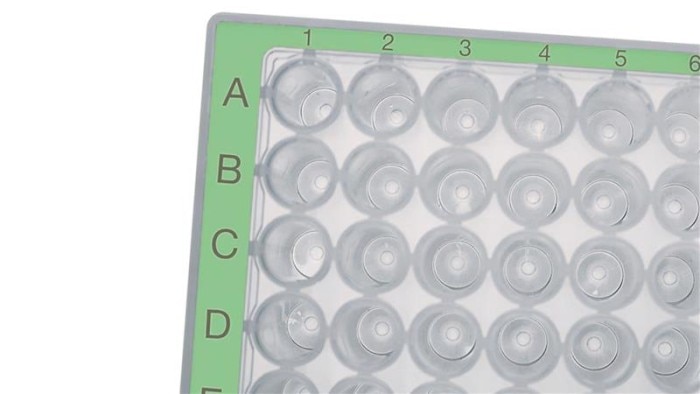
También disponemos de varios tipos de placas optimizadas para aplicaciones concretas, entre las que se incluyen:
- Placas SafeCode : códigos de barras personalizados para una mayor trazabilidad.
- Placas Eppendorf LoBind® : la tecnología LoBind reduce la unión de la muestra a la superficie, maximizando la recuperación de ADN o proteínas.
- Microplacas para ensayos y lectores Eppendorf : pocillos completamente negros o blancos para una mejor detección de la señal, y una autofluorescencia y autoluminiscencia minimizadas.
- Placas para PCR Eppendorf twin.tec® real-time : placas PCR con pocillos blancos, diseñadas para aumentar las señales de fluorescencia en la PCR en tiempo real (qPCR) y otros ensayos de fluorescencia.
- Placas para PCR Eppendorf twin.tec® Trace BioBased : placas PCR fabricadas con un polímero de base biológica, que le ayudan a reducir la huella de carbono de su laboratorio.
Leer más
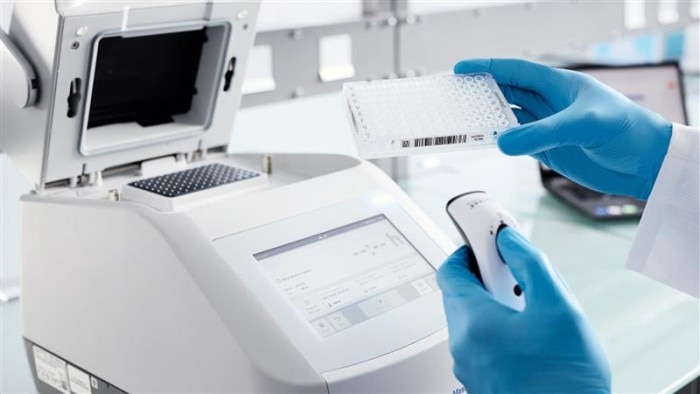
Videos not loading, because cookies have been rejected. Change your

Puede obtener más información sobre nuestros distintos tipos de placas y sus características en nuestro folleto .
Leer más
¿Qué placas Eppendorf debe elegir?
En Eppendorf ofrecemos tres tipos principales de placas: placas para PCR Eppendorf twin.tec® , placas deepwell y microplacas .
Las microplacas Eppendorf son una opción versátil para una amplia gama de ensayos, incluidos aquellos que requieren una alta resistencia química o térmica. Las placas deepwell de Eppendorf ofrecen la misma alta calidad, versatilidad y rendimiento que nuestras microplacas, pero con pocillos más profundos para admitir mayores volúmenes de muestra. Y por último, como su nombre indica, las placas PCR twin.tec son una opción fiable para los ensayos PCR, con pocillos de polipropileno de paredes finas para una transferencia óptima del calor a la muestra, y robustos marcos de policarbonato para una gran rigidez.
Una vez que haya seleccionado el tipo de placa adecuado para sus necesidades de laboratorio, hay muchos otros factores que debe tener en cuenta, como el número de pocillos (placas de 96 pocillos o de 384 pocillos), la forma de los pocillos, el color de la placa y el volumen de la muestra. A continuación encontrará más información que le ayudará a elegir la variante de placa Eppendorf más adecuada para usted.
Las microplacas Eppendorf son una opción versátil para una amplia gama de ensayos, incluidos aquellos que requieren una alta resistencia química o térmica. Las placas deepwell de Eppendorf ofrecen la misma alta calidad, versatilidad y rendimiento que nuestras microplacas, pero con pocillos más profundos para admitir mayores volúmenes de muestra. Y por último, como su nombre indica, las placas PCR twin.tec son una opción fiable para los ensayos PCR, con pocillos de polipropileno de paredes finas para una transferencia óptima del calor a la muestra, y robustos marcos de policarbonato para una gran rigidez.
Una vez que haya seleccionado el tipo de placa adecuado para sus necesidades de laboratorio, hay muchos otros factores que debe tener en cuenta, como el número de pocillos (placas de 96 pocillos o de 384 pocillos), la forma de los pocillos, el color de la placa y el volumen de la muestra. A continuación encontrará más información que le ayudará a elegir la variante de placa Eppendorf más adecuada para usted.
Leer más
¿Pocillos con fondo plano, en U o en V?
Las microplacas Eppendorf están disponibles con diferentes formas de pocillos diseñadas para adaptarse a una variedad de necesidades:
- Placas de 96 pocillos de fondo plano: los pocillos de las placas de microtitulación con fondo plano suelen ser los preferidos para los ensayos basados en fluorescencia y luminiscencia, ya que garantizan una transmisión uniforme de la luz. También son ideales cuando se utilizan lectores de placas que analizan muestras desde abajo y cuando se cultivan células adherentes.
- Placas de 96 pocillos con fondo en V: son una opción ideal si busca microplacas para centrífugas, ya que su forma en V (pocillos cónicos) maximiza la recuperación de muestras durante la centrifugación, lo que resulta especialmente beneficioso cuando se trabaja con muestras costosas o limitadas.
- Placas de 96 pocillos con fondo en U: la forma en U (redondeada) de los pocillos hace que estas placas sean ideales para una amplia gama de tareas de centrifugación, como la mezcla de muestras, el lavado y la peletización.
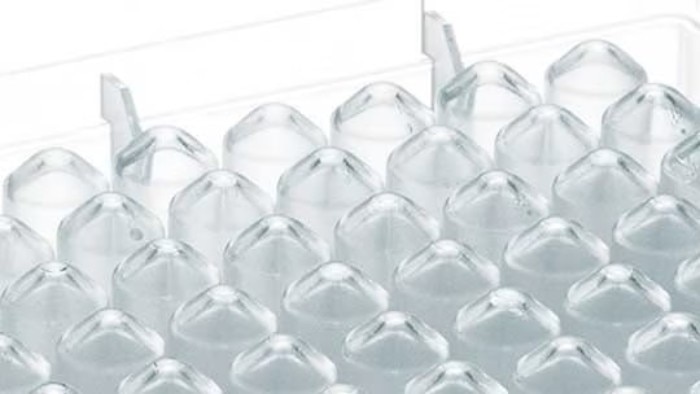
¿Qué color de pocillo es mejor para mis ensayos?
- Placas transparentes: los pocillos transparentes ofrecen una mayor visibilidad de las muestras, lo que resulta especialmente útil para la enseñanza de dispositivos de automatización. Los pocillos transparentes suelen ser la opción predeterminada, si es que no utiliza sus placas para ensayos de luminiscencia o fluorescencia.
- Placas negras: ofrecen una excelente relación señal-ruido, incluso con muestras de baja concentración.
- Placas blancas: maximizan la reflexión para una detección de luminiscencia excepcionalmente sensible.
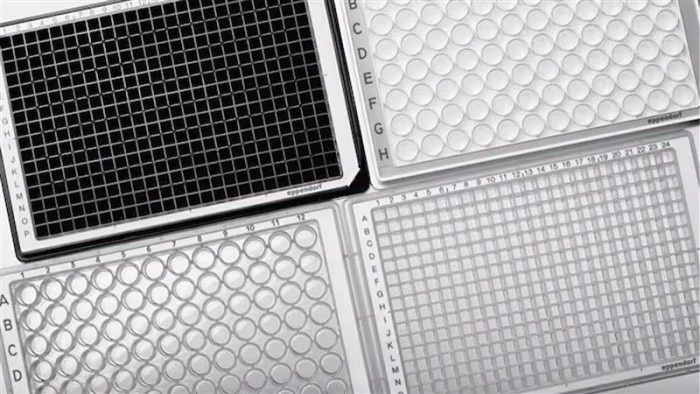
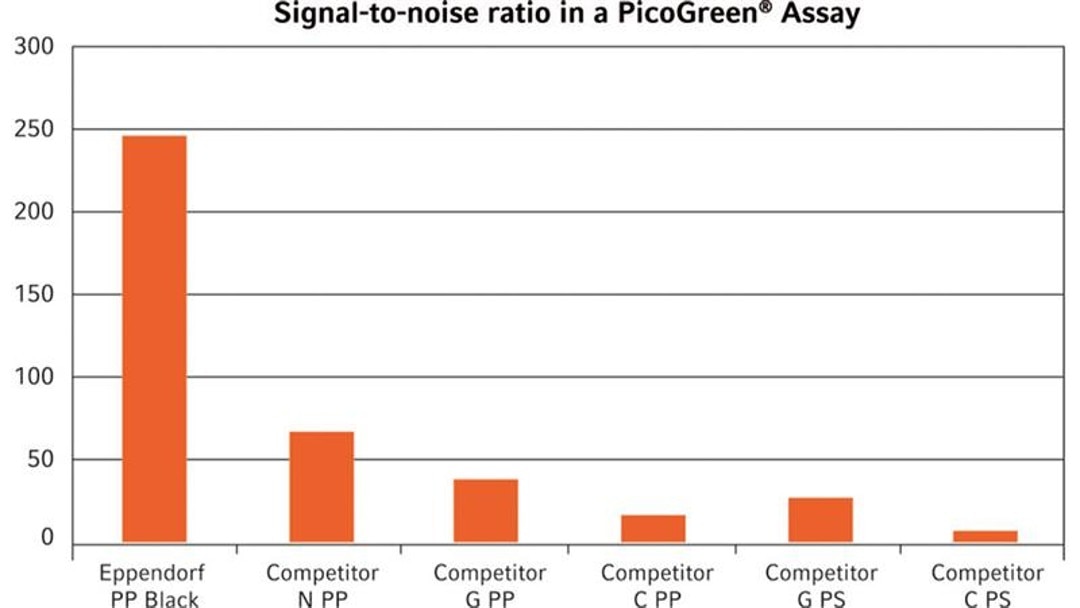
¿Necesita más ayuda para decidir la forma y el color adecuados de los pocillos? Lea este blog.
¿Con qué volúmenes y números de muestra está trabajando?
Nuestras microplacas, placas deepwell y placas PCR suelen estar disponibles en formatos de 96 o 384 pocillos. Las placas de microtitulación de 96 pocillos son adecuadas para aplicaciones que requieren un número menor de muestras o volúmenes de pocillos más grandes, mientras que las placas de 384 pocillos son una excelente opción para cribados de mayor rendimiento.
Haga clic aquí para obtener más detalles sobre los formatos de placas y los volúmenes de trabajo.
Leer más
¿Cuánto cuestan las placas Eppendorf?
Nos esforzamos por que todas las placas Eppendorf sean asequibles, sin comprometer nunca la calidad ni el rendimiento. Para obtener información sobre precios de tipos de placas específicos, visite las páginas de productos individuales o póngase en contacto con nuestro equipo de ventas.
Leer más
Videos not loading, because cookies have been rejected. Change your













